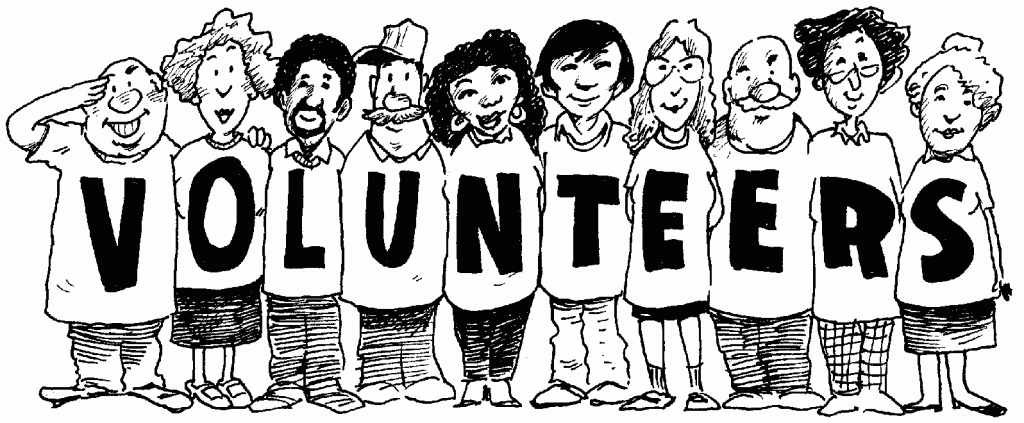Over the past few days we’ve talked about how to connect volunteers to your organization’s leadership and tips for connecting volunteers to your mission. Today we’re looking at the importance of building connections between volunteers and staff.
Studies show a direct correlation between the effectiveness with which an organization involves volunteers and the regard to which it holds its paid staff. Keep in mind an atmosphere of distrust, alienation, and tension moves organizations away from the mission. Here, volunteer involvement is limited, almost happening in spite of the organization instead of because of it.
involves volunteers and the regard to which it holds its paid staff. Keep in mind an atmosphere of distrust, alienation, and tension moves organizations away from the mission. Here, volunteer involvement is limited, almost happening in spite of the organization instead of because of it.
Eliminate the invisible boundaries.
Take the time out to learn how staff and volunteers regard one another. A mutually supportive relationship minimizes frustration and fosters a cooperative working relationship. Effective organizations take deliberate steps to strengthen the working relationship between paid staff and volunteers to heighten the sense of working together toward a common goal.
Bridge the gap between paid staff and volunteers.
 Find ways to encourage supervisors to trust in the volunteers to not only be responsible for their work, but to commit themselves to the organization’s mission, and to devote their energy and talent to achieve the best possible results. Some volunteers may have even more longevity with the organization than most staff and can be a valuable resource to sustain the core values and spirit behind the mission.
Find ways to encourage supervisors to trust in the volunteers to not only be responsible for their work, but to commit themselves to the organization’s mission, and to devote their energy and talent to achieve the best possible results. Some volunteers may have even more longevity with the organization than most staff and can be a valuable resource to sustain the core values and spirit behind the mission.
Continuity of culture through storytelling.
Stories contribute to the shared vision that is such a large part of the mission connection. Like communities, organizations have cultures sustained from one generation to the next. New staff and volunteers become quickly acquainted with the mission, what is valued and what isn’t through telling the organization’s story. Positive stories about volunteer involvement create an encouraging environment that supports volunteer work.
Sustain the volunteer-staff connection!
It is important to help volunteers develop the knowledge and skills they need to perform the roles to which they are assigned. It’s equally important to train staff in how to train staff appropriately. The quality of volunteer recognition makes the biggest difference over the long haul. Empower staff and volunteers by acknowledging their contribution to mission-focused work! Rewarding successful joint efforts goes a long way toward fostering mutual respect, commitment, and satisfaction among both, employees and community volunteers.
the roles to which they are assigned. It’s equally important to train staff in how to train staff appropriately. The quality of volunteer recognition makes the biggest difference over the long haul. Empower staff and volunteers by acknowledging their contribution to mission-focused work! Rewarding successful joint efforts goes a long way toward fostering mutual respect, commitment, and satisfaction among both, employees and community volunteers.
What have you done to help build the connection between volunteers and staff at your organizations? What has worked, and what hasn’t? Let us know in the comments!

 Plan for changing weather. Keep an eye on the weather reports a few days before your project and up to your project day. Weather in the summer can turn from bright and sunny to clouds and rain very quickly. Make sure you’re prepared for possible changes in the weather.
Plan for changing weather. Keep an eye on the weather reports a few days before your project and up to your project day. Weather in the summer can turn from bright and sunny to clouds and rain very quickly. Make sure you’re prepared for possible changes in the weather.
 Water. When you’re working in the sun it’s important to make sure you’re drinking enough water. Make sure there’s plenty of water for the volunteers that you’ll have on site, and make sure that they take a minute or two for themselves to drink water throughout the day. Even if they don’t think they’re thirsty, encourage volunteers to drink something. Staying hydrated helps volunteers to stay sharp and safe.
Water. When you’re working in the sun it’s important to make sure you’re drinking enough water. Make sure there’s plenty of water for the volunteers that you’ll have on site, and make sure that they take a minute or two for themselves to drink water throughout the day. Even if they don’t think they’re thirsty, encourage volunteers to drink something. Staying hydrated helps volunteers to stay sharp and safe.

 Who is in charge of managing volunteers? Is there a process in place for handling new volunteers? Ensuring that volunteers are appropriately assigned and supported is a collective responsibility, and everyone understands how their piece relates to the whole.
Who is in charge of managing volunteers? Is there a process in place for handling new volunteers? Ensuring that volunteers are appropriately assigned and supported is a collective responsibility, and everyone understands how their piece relates to the whole.



 Founded by tennis legend Billie Jean King just two years after the passing of Title IX, the
Founded by tennis legend Billie Jean King just two years after the passing of Title IX, the  “Soccer – and sports in general – helped me become the person I am today. That quiet, insecure, shy girl is now a confident, outspoken, and powerful woman. I couldn’t imagine my life without sports. Playing sports isn’t the answer to all of life’s problems, but I firmly believe that the people who play sports are better equipped to face them.
“Soccer – and sports in general – helped me become the person I am today. That quiet, insecure, shy girl is now a confident, outspoken, and powerful woman. I couldn’t imagine my life without sports. Playing sports isn’t the answer to all of life’s problems, but I firmly believe that the people who play sports are better equipped to face them. AppMakr.com is a browser-based platform designed to make creating your own iPhone app quick and easy. Its free drag and drop tool enables anyone to build rich content based apps using a point and click solution.
AppMakr.com is a browser-based platform designed to make creating your own iPhone app quick and easy. Its free drag and drop tool enables anyone to build rich content based apps using a point and click solution.







 Dan Pallotta writes about nonprofit issues for the
Dan Pallotta writes about nonprofit issues for the  A few days ago, Deloitte released their 2011 Volunteer IMPACT Survey which looks at the connection between volunteering in the workplace and employee engagement – focusing on millennials in the workplace. The survey found that millennials who frequently participate in workplace volunteer activities are more likely to be proud, loyal, and satisfied employees as compared to those who rarely or never volunteered.
A few days ago, Deloitte released their 2011 Volunteer IMPACT Survey which looks at the connection between volunteering in the workplace and employee engagement – focusing on millennials in the workplace. The survey found that millennials who frequently participate in workplace volunteer activities are more likely to be proud, loyal, and satisfied employees as compared to those who rarely or never volunteered.
